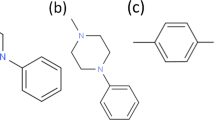Abstract
The in vitro permeability of a series of both hydrophilic and lipophilic compounds, as defined by the octanol/water partition coefficient, was measured in four segments of rabbit, monkey, and dog intestine using a side-by-side diffusion cell. A linear relationship was established for tissue resistance to hydrophilic compound diffusion in jejunum and colon among rabbit, monkey, and dog. The results suggest that rabbit jejunum is twice as permeable as monkey and dog jejunum. The colonic tissues of monkey, rabbit, and dog demonstrate similar permeabilities. Measuring the permeabilities of different tissues with compounds of similar physicochemical properties allows comparison of tissue restriction to transport. Thus, in vitro permeability measurements may be used to investigate physiological differences of various intestinal tissue segments that influence tissue permeability. Investigating the permeability of different intestinal segments from various species could allow the identification of an appropriate in vitro intestinal permeability model that will lead to the prediction of intestinal absorption in humans, eliminating the need for extensive and often misleading in vivo animal testing.
Similar content being viewed by others
REFERENCES
G. M. Grass and S. A. Sweetana. In vitro measurement of gastrointestinal tissue permeability using a new diffusion cell. Pharm. Res. 5:372–376 (1988).
G. M. Grass and S. A. Sweetana. A correlation of permeabilities for passively transported compounds in monkey and rabbit jejunum. Pharm. Res. 6:857–862 (1989).
G. L. Amidon, P. J. Sinko, and D. Fleisher. Estimating human oral fraction dose absorbed: A correlation using rat intestinal-membrane permeability for passive and carrier-mediated compounds. Pharm. Res. 5:651–654 (1988).
P. Artursson and J. Karlsson. Correlation between oral drug absorption in humans and apparent drug permeability coefficients in human intestinal epithelial (Caco-2) cells. Biochem. Biophys. Res. Comm. 175(3):880–885 (1991).
I. Hidalgo, T. Raub, and R. Borchardt. Characterization of the human colon carcinoma cell line (caco-2) as a model system for intestinal epithelial permeability. Gastroenterology 96:736–749 (1989).
W. D. Stein. The Movement of Molecules Across Cell Membranes, Vol. 6, Academic Press, New York, 1967, pp. 36–64.
G. Levy and W. J. Jusko. Factors affecting the absorption of riboflavin in man. J. Pharm. Sci. 55:285–289 (1966).
B. Beermann, M. Groschinsky-Grind, and A. Rosen. Absorption, metabolism, and excretion of hydrochlorothiazide. Clin. Pharmacol. Ther. 19:531–537 (1975).
I. H. Hidalgo, K. M. Hilgren, G. M. Grass, and R. T. Borchardt. Characterization of the unstirred water layer in CACO-2 cell monolayers using a novel diffusion apparatus. Pharm. Res. 8:222–227 (1991).
E. J. Benjamin, B. A. Firestone, R. Bergstrom, M. Fass, I. Massey, I. Tsina, and Y. T. Lin. Selection of a derivative of the antiviral agent 9-[(l,3-dihydroxy-2-propoxy)-methyl]guanine (DHPG) with improved oral absorption. Pharm. Res. 4:120–125 (1987).
V. S. Chadwick, S. F. Phillips, and A. F. Hofmann. Measurements of intestinal permeability using low molecular weight polyethylene glycols (PEG 400). Gastroenterology 73:247–251 (1977).
R. Runkel, M. Chaplin, G. Boost, E. Segre, and E. Forchielli. Absorption, distribution, metabolism, and excretion of naproxen in various laboratory animals and human subjects. J. Pharm. Sci. 61:103–108 (1972).
D. Hollander, S. Koyama, V. Dadufalza, D. Q. Tran, P. Krugliak, T. Ma, and K. Y. Ling. Polyethylene glycol 900 permeability of rat intestinal and colonic segments in vivo and brush border membrane vesicles in vitro. J. Lab. Clin. Med. 113:505–515 (1989).
A. B. R. Thomson, C. A. Hotke, and W. M. Weinstein. Comp. Biochem. Physiol. 72A(l):225–236 (1982).
K. C. Meadows and J. B. Dressman. Mechanism of acyclovir uptake in rat jejunum. Pharm. Res. 7:299–303 (1990).
M. J. Jackson. Drug transport across gastrointestinal epithelia. In L. R. Johnson (ed.), Physiology of the Gastrointestinal Tract, 2nd ed., Raven Press, New York, 1987.
A. Ross, A. W. Rubin, and J. J. Deren. Differential permeability of the proximal and distal rabbit small bowel. J. Clin. Inv. 51:2414–2419 (1972).
J. W. L. Robinson, H. Menge, F. V. Sepúlveda, and V. Mirkovitch. Functional and structural characteristics of the jejunum and ileum in the dog and the rat. Digestion 15:188–199 (1977).
I. Johno, K. Kawakatsu, H. Kuwata, and S. Kitazawa. Segmental difference in transmucosal fluid movement and its effect on gastrointestinal drug absorption in rabbits. Int. J. Pharm. 25:255–263 (1985).
M. S. Harris and J. G. Kennedy. Relationship between distention and absorption in rat intestine. II. Effects of volume and flow rate on transport. Gastroenterology 94:1172–1179 (1988).
D. Winne. Dependence of intestinal absorption in vivo on the unstirred layer. Arch. Pharm. 304:175–181 (1978).
Author information
Authors and Affiliations
Rights and permissions
About this article
Cite this article
Jezyk, N., Rubas, W. & Grass, G.M. Permeability Characteristics of Various Intestinal Regions of Rabbit, Dog, and Monkey. Pharm Res 9, 1580–1586 (1992). https://doi.org/10.1023/A:1015812408231
Issue Date:
DOI: https://doi.org/10.1023/A:1015812408231




